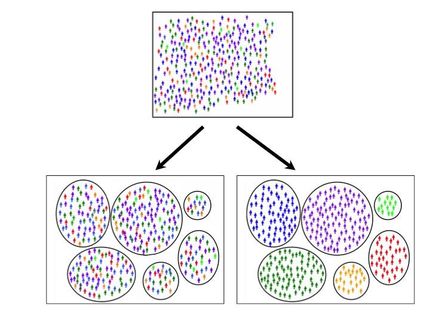TGen scientists uncover new field of research that could help police in crime scene forensics
Resolving individuals contributing trace amounts of DNA to highly complex mixtures using high-density SNP genotyping microarrays
A team of investigators led by scientists at the Translational genomics Research Institute (TGen) have found a way to identify possible suspects at crime scenes using only a small amount of DNA, even if it is mixed with hundreds of other genetic fingerprints. Using genotyping microarrays, the scientists were able to identify an individuals DNA from within a mix of DNA samples, even if that individual represented less than 0.1 percent of the total mix. They were able to do this even when the mix of DNA included more than 200 individual DNA samples. The results appear in PLoS genetics.
The discovery could help police investigators better identify possible suspects, even when dozens of people over time have been at a crime scene. It also could help reassess previous crime scene evidence, and it could have other uses in various genetic studies and in statistical analysis.
"This is a potentially revolutionary advance in the field of forensics,'' said the paper's senior author, Dr. David W. Craig, associate director of TGen's Neurogenomics Division. "By employing the powers of genomic technology, it is now possible to know with near certainty that a particular individual was at a particular location, even with only trace amounts of DNA and even if dozens or even hundreds of others were there, too.''
The researchers analyzed complex mixes of genomic DNA using high-density Single Nucleotide Polymorphism (SNP) genotyping microarrays. This approach enabled them to accurately identify individuals from DNA mixes of at least 200 people using less than one in one-thousandth of the total mix. Theoretically, they showed that individuals could be identified in mixes of more than 1,000 people.
Currently, it is difficult for police forensic investigators to detect an individual if their genomic DNA is less than 10 percent of a mix, or if it is from a large mix of DNA material. A long-held assumption within the field of forensic science was that it was not possible to identify individuals using pooled data — until now.
According to Commander Brent Vermeer, director of the Phoenix Police Department crime lab, much DNA evidence is rendered useless because of contamination, and that to eventually put the TGen theoretical research into a cost-effective police practice "would be an amazing asset.''
Most read news
Topics
Organizations
Other news from the department science

Get the analytics and lab tech industry in your inbox
By submitting this form you agree that LUMITOS AG will send you the newsletter(s) selected above by email. Your data will not be passed on to third parties. Your data will be stored and processed in accordance with our data protection regulations. LUMITOS may contact you by email for the purpose of advertising or market and opinion surveys. You can revoke your consent at any time without giving reasons to LUMITOS AG, Ernst-Augustin-Str. 2, 12489 Berlin, Germany or by e-mail at revoke@lumitos.com with effect for the future. In addition, each email contains a link to unsubscribe from the corresponding newsletter.




















































